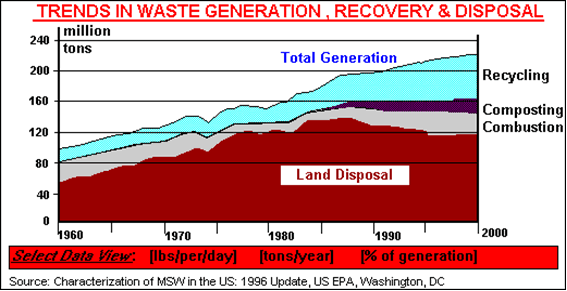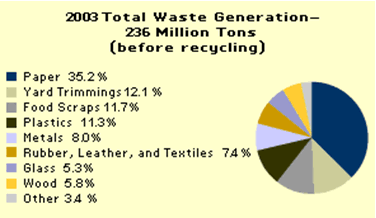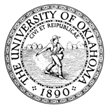Building Sustainable Landfills:
What will we do with our increasing amount of waste?
Research Experience for Teachers Program at the University of Oklahoma
June 21 – July 26, 2006
Dr. Mark A. Nanny, Associate Professor, Environmental Chemistry School
of Civil Engineering and Environmental Science, and the Institute for
Energy and the Environment, Sarkeys Energy Center.
Overview
Over 5 weeks, you and 4 other science and math teachers, will explore
and study the closed Norman landfill which is located on the floodplain
of the Canadian River. This landfill is partially capped and contains
a leaking leachate plume moving towards the Canadian River. You as a group
will develop research questions related to building sustainable landfills,
that is, landfills in which the waste is used as a product. You will examine
the science (chemistry and microbiology) and engineering of how a landfill
operates and incorporate this knowledge in developing and answering your
research questions. Field and laboratory work will be conducted in the
process of answering your research questions. As you conduct your scientific
research, your group will work with education faculty from the K-20 Center
at the University of Oklahoma to transform your research experiences into
meaningful science curricula for your students.
Introduction
For as long as humans have lived in communities, landfills have been
a major method for disposing of wastes. Archeologists have made many important
discoveries in middens, or prehistoric landfills. It was only until recently
(late 1970s’) that landfills became regulated and forced to follow
strict engineering guidelines in order to protect groundwater and surface
water, as well as minimize disease vectors (e.g., rats, flies).
Despite the seemingly simplicity of a landfill (it’s just a hole
in the ground filled with trash – right?), landfills are actually
quite complex systems; their microbiology and chemistry changing as the
landfill ages. As people learn more about the microbial and chemical processes
occurring inside a landfill, they are beginning to move away from the
idea that landfills are merely static piles of trash that once when closed
and capped, they will remain closed forever, to the idea that landfills
can actually be engineered to be useful resources. An example of using
landfills as a resource is to capture methane gas produced by methanogenic
microbes decomposing the wastes and use it for industrial purposes such
as fuel for running boilers.
As one can see from Figure 1, the amount of municipal solid waste
(MSW) produced per person in the United States is steadily increasing.
Figure 2 shows that despite this trend, much of the waste entering
landfills is leveling off while methods such as recycling, composting,
and combustion deal with the increased amount of waste. |

Figure 1: EPA Web Site: www.epa.gov/msw/facts.htm |

Figure 2: From EPA Web Site.
| Figure 3 shows the composition of the waste stream. Most notable
is that over a third of the waste is paper and paper products (ligno-cellulosic
materials), followed by yard wastes and food scraps. In other words,
nearly two-thirds of the materials placed in American landfills are
biodegradable materials. The other materials: plastics, metals, and
glass could have commercial value. |

Figure 3: From EPA Web Site. |
RET Experience
Over the five week period, you and your group will learn about the intricate
chemistry and microbiology occurring in a landfill. You will visit the
closed Norman Landfill and then afterwards, discuss current research being
conducted at the Norman Landfill with scientists from the United States
Geological Survey (USGS). The USGS established the Norman Landfill as
a national research site for studying the behavior of old, leaking landfills.
You will then develop research questions related to the issue of how
“do we design better landfills so that they will be considered future
resources”? Your research questions can be very fundamental in nature
(what are the best microbes for degrading paper into methane?; what chemical
changes occur in paper as it degrades?) to more applied questions (how
should waste be treated before being put into a landfill?). You will conduct
experiments to test your research hypotheses and answer your research
questions. Both field and lab work can be planned, e.g., the USGS can
help us collect cores from the landfill or sample the leachate plume.
Likewise, we can visit active landfills in Oklahoma City.
As you progress through your research activities, you will be working
with your group members in creating exciting and innovative lessons and
activities that incorporate your research experiences. Not only will you
want to use your experiences to make science and math more relevant for
your students, you will also want to engage your students in the scientific
process, just as you are doing in this 5 week session.
My goal for you and your students is that besides successfully accomplishing
the items mentioned above, everyone will begin to become more aware of
the materials they dispose of in landfills. Furthermore, I hope that your
students will be intrigued so much by the activities you develop to realize
that waste can be a resource once we learn how to be creative in using
science, math, and engineering to solve our problems!
Some Useful Informational Websites
Introduction to Landfills - how they are built, operated, and work: http://people.howstuffworks.com/landfill.htm
EPA Web Sites:
Landfills/Land Disposal: http://www.epa.gov/epaoswer/non-hw/muncpl/landfill/landfills.htm
See: Solid Waste Landfills; Landfill Methane Outreach Program; Landfill
Reclamation
Municipal Solid Waste: http://www.epa.gov/msw/
See: Basic Facts; Reduce, Reuse, Recycle; MSW Topics
Decision Makers’ Guide to Solid Waste Management:
http://www.epa.gov/epaoswer/non-hw/muncpl/dmg2.htm
Oklahoma Department of Environmental Quality Web Site
2003 Landfill Tonnage Received (Oklahoma Landfills):
http://www.deq.state.ok.us/lpdnew/SW/Tonnage/2003LandfillTonnageReceived.htm
United States Geological Survey
Norman Landfill: http://ok.water.usgs.gov/norlan/
|



